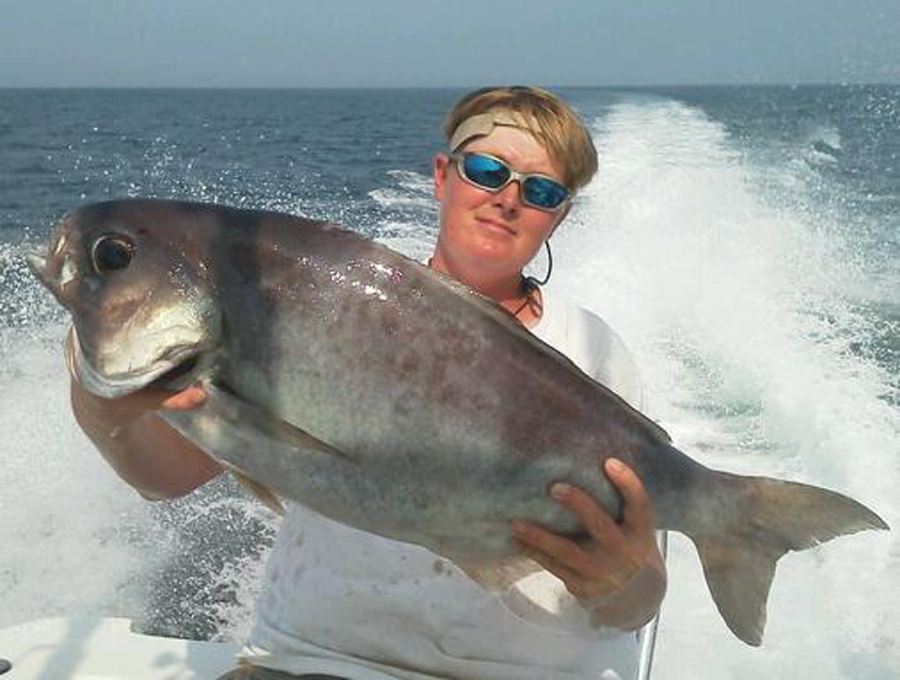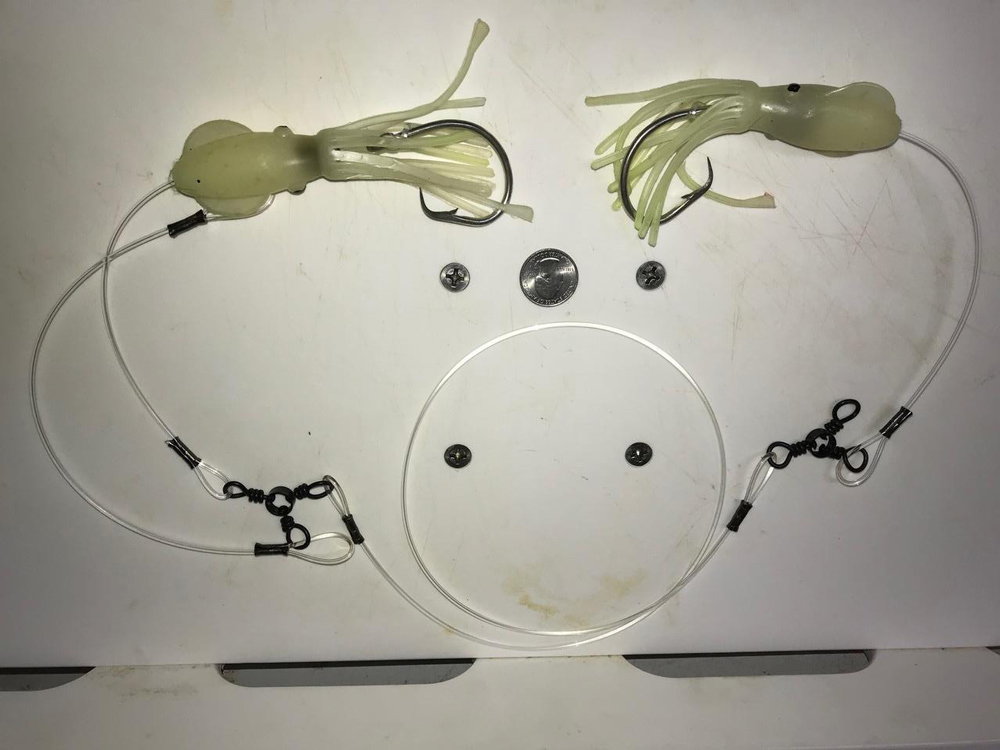Just how do you fish for barrelfish? Well, remember when no one had ever heard of tilefish? Or opah? It wasn’t that long ago – and there’s yet another under-discovered fish off our coast.

It’s hard to find better fighting or better tasting fish than any of the white-fleshed species that come from the cold, deep waters off of the Mid-Atlantic coast. I’m mostly talking about blueline tilefish, golden tilefish, grouper, and wreckfish. I’ve been deep-dropping for these species off of the Virginia coast or several years now, but ever since I caught my first barrelfish, it has become one of my favorites.
Strange Brew
The first barrelfish I saw was caught on an offshore wreck by a fellow angler on a recreational trip while we were catching blueline tiles and black seabass. Nobody on the boat knew what it was, so we took several photos and emailed them around until finally, a researcher at the Virginia Institute of Marine Science (VIMS) identified it as Hyperoglyphe perciformis, or barrelfish.
Barrelfish are found in deep water along the Continental shelf and can be targeted in anywhere from 300 to 1200 feet of water, around structure such as wrecks, coral, and rocky bottom in and around the canyons, including the Norfolk and Washington. Occasionally, we’ll catch one or two – like the day we caught our first. But much more frequently the fish are schooled up and when you find one, everyone on the boat hooks up. When this happens mark the spot, because they’ll be there again. Maybe not on the next trip, but eventually they will return to that spot.
When you hook up, hold on as the barrelfish hits like a freight train. There is no tap-tap-tap, but just an instant aggressive bite and hard run back to the bottom – hold on for the ride, as this fish tries to get back home. Unlike most other fish from these depths, the barrels fight all the way to the surface and if released, will quickly swim back down apparently with no ill effects.
Rigging for Barrelfish
We use the same tackle, rigs and bait for most of our deep-dropping, whether fishing for golden tilefish, or wreckfish. For rods, you need one that can pick up two to three pounds of lead, but still has a limber tip so you can feel the bottom and feel the bites. Five and a half to six foot stand-up trolling rods in the 30 to 50 pound range, or a jigging rod that can support the weights that you will be using to reach bottom in up to 1200 feet of water, will do the trick. To see if a rod is up to the task, loop a piece of monofilament fishing line around the tip and use it to pick up a two or three pound weight.
For reels, you can use any conventional or electric deep drop reel that can hold upwards of 500 yards of 65 to 80 pound braid line. There has been a trend towards super-high gear ratios in reels lately, which brings up more line per crank, but a higher gear ratio makes for more effort per crank when you are bringing up your weight or a fish from the depths. Stay away from anything higher than 5:1 unless you’re using a two-speed reel. Graphite reels are great, as you’ll be holding your rod for most of the time you’re fishing, but lightweight aluminum will also work well.
Many deep-drop anglers are using electric reels, but if you choose to do so, know that you won’t be able to submit your catch for an IGFA or state record; and record-breaking fish are being caught regularly.
For terminal tackle, we use a simple two hook bottom rig made from monofilament. I generally use 400 pound test mono for all of my deep drop rigs, not for its strength but for its abrasion resistance. If a grouper, wreckfish, or barrelfish makes it back to the structure on the bottom, you will be grateful for having the heavy mono. A “weak link” of 60 pound mono between the main line and the bottom rig can save you from losing hundreds of yards of expensive braid, in case you get snagged.

I am a firm believer in circle hooks for this fishery, and have hardly ever had a fish come unhooked on the way up. A commercial longline-style circle hook, such as a Mustad 39960D in 14/0 or 16/0, works well. These fish have big mouths, so there is no issue using big hooks.
Bait consists of anything from whole small squid to just about any cut bait such as false albacore, bluefish, or Spanish mackerel. When the fish are there they aren’t finicky, and any of these baits will work.
Barrelfish on the Barbi
These fish are absolutely delicious. While it has little commercial value, that’s because it’s difficult to harvest commercially, not due to the quality of the meat. You can prepare barrelfish any of a number of ways: baked, broiled or fried. When I serve it, my guests always ask what it is and tell me it’s some of the best fish they have every eaten. I’ve got to say, however, that my favorite way to eat barrelfish is Korean style sashimi. I was introduced to this style of eating by some of my Korean charter customers. When they cleaned a fish and made a dipping sauce from a hot pepper paste called Gochujang, I had to try it. They wrapped the fish in lettuce and sesame leaves and dipped it in this sauce, and it was absolutely outstanding.
However you plan on eating your fish, proper preparation is key and this starts as soon as the fish is brought into the boat. Whether you’re fishing on your own boat or on a charter, it’s a shame to get back to the dock and have a pile of soft, warm fish. Bring plenty of ice – at least 150 pounds for a full day of fishing – so that when you get back to the dock, you know those fish will be cold. As we go through the day, I add ice to the fish box and make sure that all of the fish are covered in ice, and not just sitting on top of it.
There’s currently no minimum size or catch limit for barrelfish, but most of us who target them do self-regulate. We won’t take more than one or two fish per person from any spot on any given day, because we want them to be available for many years to come.
Bonus Barrelfish Cleaning Tip
Never let fresh water touch the meat once the fish is cut. Fresh water will completely change its taste and texture, especially if you plan on freezing it. Be careful not to cut the bladder or digestive tract, and if there is a little blood, just pat it with some paper towel – but do not rinse with fresh water. (You can use clean salt water from the ocean).
- By Captain Stan Gold, Blind Date Charters